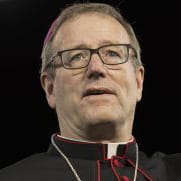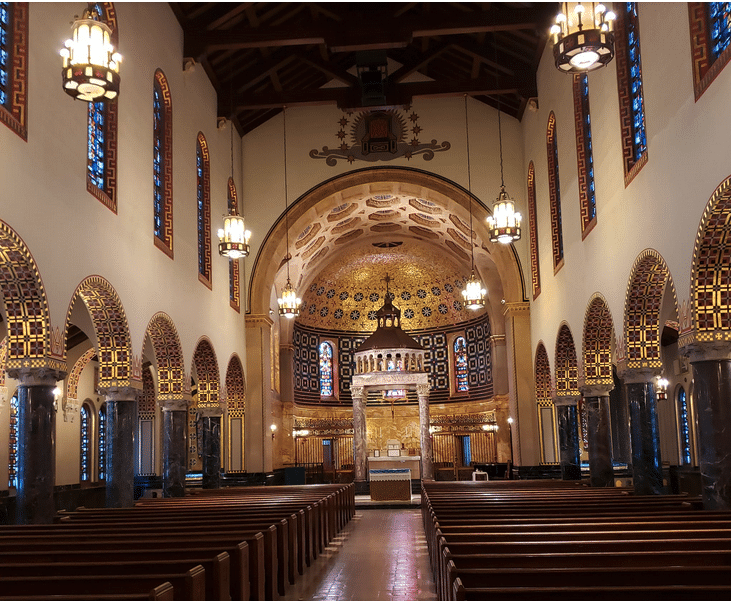Bishop Barron ‘has no intention of eliminating’ Tridentine Mass
Bishop Robert Barron “has no intention of eliminating” the Tridentine Mass in his Diocese of Winona-Rochester, Minnesota, the diocese said in a Feb. 13 statement responding to a recent outcry that described the decision of Bishop Barron to move the Tridentine Mass out of a parish church as “canceling [Traditional Latin Mass].”

Bishop Robert Barron (CNS/OSV News)
Responding to the pastoral provisions of Pope Francis’ 2021 motu proprio Traditionis Custodes — which mandates that each diocesan bishop “is to designate one or more locations where the faithful adherents of these groups may gather for the Eucharistic celebration (not however in the parochial churches and without the erection of new personal parishes)” — Bishop Barron ended the celebration of the Tridentine Mass, often called the Traditional Latin Mass, at the Basilica of St. Stanislaus in Winona, Minnesota.
Approximately 75 parishioners had attended the Tridentine Mass at St. Stanislaus prior to Bishop Barron’s decision to relocate the Mass.
Saint Mary’s University of Minnesota confirmed to Our Sunday Visitor that the university received a request from the diocese to host the regular celebration of the Tridentine Mass at St. Mary of the Angels chapel. Located just 2.5 miles from St. Stanislaus Basilica, its status as a chapel rather than a parish church — and its current availability — makes it a potential site to host the Tridentine Mass. The chapel is owned by the university.
Seeing no conflict with the diocesan proposal and the pastoral provisions of Traditionis Custodes, the university told Our Sunday Visitor that the request would be considered.
Currently, St. Mary of the Angels chapel does not host regularly scheduled weekend Masses. The university makes the space available to Catholic groups on request, often hosting weddings and retreats. Saint Mary’s said that the Tridentine Mass community would be expected to use the chapel within the same provisions as any other group, including financially contributing to assist with the chapel’s upkeep.
Saint Mary’s said that the chapel’s availability and its furnishings make it an ideal place for the celebration of the traditional liturgy. A worthy setting for the liturgy is important, too, for the Diocese of Winona-Rochester, which stated, “Every effort is being made to find sacred spaces for this purpose which suitably reflect the beauty and dignity of the liturgy.”

Chapel of St. Mary of the Angels. Facebook screengrab
The question of the Traditional Latin Mass is particularly neuralgic in Winona, where for years the Society of Saint Pius X (SSPX), founded by Archbishop Marcel Lefebvre in 1970, had its seminary. Rejecting liturgical reforms and doctrinal teaching of Vatican II, Lefebvre was excommunicated in 1988 by Pope St. John Paul II for consecrating four SSPX priests as bishops without the required ecclesiastical permissions.
Today, the SSPX uses the former Winona seminary as a novitiate. In 2015, Pope Francis granted the faculty for priests of the society to hear confessions, a permission which was renewed in 2016 and “remains until further provisions can be made” according to the apostolic letter Misericordia Et Misera. However, the society’s irregular canonical status continues.
Built in 1924 and named for the famous church in Assisi, the Chapel of St. Mary of the Angels was the campus chapel for the College of Saint Teresa, which operated from 1913 until 1989. The former St. Teresa campus was purchased by the Hiawatha Education Foundation in 1991. Today, various buildings are owned or leased by Cotter Schools (a diocesan elementary and high school), Saint Mary’s University and Winona State University.
According to the Winona Post, the Chapel of St. Mary of the Angels underwent a substantial conservation effort overseen by the Midwest Art Conservation Center in 2018. The six-month project included cleaning the chapel’s marble high altar and “famed mosaic ceiling.”

No comments:
Post a Comment